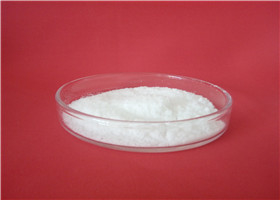

| Product name: | Tacrolimus |
| Other Name: | (2-propenyl)-,(3s-(3r*(e(1s*,3s*,4s*)),4s*,5r*,8s*,9e,12r*,14r*,15s*,16r*,18s*;,19s*,26ar*))-;16-dimethoxy-4,10,12,18-tetramethyl-8-3-(2-(4-hydroxy-3-methoxycyclohexyl)-1;19-epoxy-3h-pyrido(2,1-c)(1,4)oxaazacyclotricosine-1,7,20,21(4h,23h)-tetrone,5,6,8,11,12,13,14,15,16,17,18,19,24,25,26,26a-hexadecahydro-5,19-dihydroxy-3-(2-(4-hydroxy-3-methoxycyclohexyl)-14,16-dim;6,8,11,12,13,14,15,16,17,18,19,24,25,26,26a-hexadecahydro-5,19-dihydroxy-5;fr900506;prograf;tsukubaenolide; |
| Original: | China |
| CAS: | 104987-11-3 |
| Molecular formula: | C44H69NO12 |
| MW: | 804.02 |
| Leading time | within 3 work days upon receipt of payment |
| Delivery | Fast and secure shipping by EMS, DHL, TNT, FedEx, UPS |
| Purity | 99% |
| Package | Discreet and Hidden package according to specific requirement |
| Appearance | White crystal powder |
| Certification | SGS, ISO 9001, KOSHER |
| Minimum Order Quantity | Negotiable |
| Price | Negotiable |
| Molecular structure |
|
Tacrolimus is an immunosuppressive drug used mainly after allogeneic organ transplant to lower the risk of organ rejection. It achieves this by inhibiting the production of interleukin-2, a molecule that promotes the development and proliferation of T cells, which are vital to the body's learned (or adaptive) immune response.
Tacrolimus is also used in the treatment of other T cell-mediated diseases such as eczema (for which it is applied to the skin in a medicated ointment), severe refractory uveitis after bone marrow transplants, exacerbations of minimal change disease, Kimura's disease, and the skin condition vitiligo.
Chemically it is a 23-membered macrolide lactone that was first discovered in 1987 from the fermentation broth of a Japanese soil sample that contained the bacterium Streptomyces tsukubaensis.
Chemically it is a 23-membered macrolide lactone that was first discovered in 1987 from the fermentation broth of a Japanese soil sample that contained the bacterium Streptomyces tsukubaensis.
As an ointment, tacrolimus is used in the treatment of eczema, in particular atopic dermatitis. It suppresses inflammation in a similar way tosteroids, and is equally as effective as a mid-potency steroid. An important advantage of tacrolimus is that, unlike steroids, it does not cause skin thinning (atrophy), or other steroid related side effects.
It is applied on the active lesions until they heal off, but may also be used continuously in low doses (twice a week), and applied to the thinner skin over the face and eyelids. Clinical trials of up to one year have been conducted. Recently it has also been used to treat segmental vitiligo in children, especially in areas on the face.
| Test Items | Specification | Results |
| Identification (IR) | Should match with working standard | Confirms |
| Melting point | 246.0~252.0ºC | 246.0ºC~248.0ºC |
| Water by KF | Not more than 0.5% | 0.14% |
| Loss on drying | Not more than 0.5% | 0.17% |
| Residue on ignition | Not more than 0.2% | 0.05% |
| Heavy Metals | Not more than 20ppm | Confirms |
| Single maximum impurity | Not more than 0.5% | 0.34% |
| Total impurities | Not more than 1.0% | 0.66% |
| Assay by HPLC | 98.0% -102.0% | 101.0% |